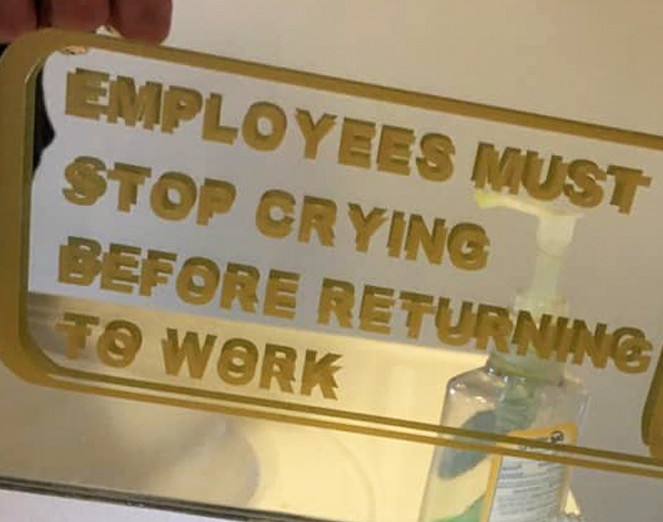Its not my job to teach you. I suggest you do your own research.
- 19 Posts
- 4.01K Comments

 14·13 hours ago
14·13 hours agoThis is patently untrue, look to Syria https://en.wikipedia.org/wiki/Battle_of_Khashamor
Wikipedia does not have an article with this exact name. Please search for Battle of Khashamor in Wikipedia to check for alternative titles or spellings.
shrug
The US is able to project power globally in a way that Russia has tried to and simply cannot counter.
Who can forget their famously successful efforts to project power into Afghanistan, Iraq, and Yemen.
Even Ukraine is projecting power in Sudan and Syria
In a report on Monday, the English-language Kyiv Post said it had obtained video from Ukraine’s military intelligence directorate (GUR) filmed in March
Listen, I know we’re all “Rah Rah Ukraine! Can’t wait till they’ve got boots on the ground in Moscow!” But you can’t seriously link to a fucking press briefing by the GUR as unbiased news.
The United States spends in a year, what the rest of the world spends in 1.2 years.
Yes, yes. This is why we can’t afford health care. Ye-haw.
But we spend all this money on an endless parade of Wall Street executive compensation packages. Nobody in Russia is getting paid a Boeing CEO’s salary to make aerospace equipment that strands folks on the IIS. And while Lockhead and Raytheon have made a mint selling the Pentagon loot boxes, the physical hardware we’ve produced still doesn’t seem capable of winning the fucking war.
There is no historical analogue to the power of the United States military.
There are numerous analogs. But none of them are particularly flattering.
The funny thing to me is that it’s still basically machine learning, the same tech that we’ve had since the mid 2000s, it’s just we have fancier hardware now.
So much of the modern Microsoft/ChatGPT project is effectively brute-forcing intelligence from accumulated raw data. That’s why they need phenomenal amounts of electricity, processing power, and physical space to make the project work.
There are other - arguably better, but definitely more sophisticated - approaches to developing genetic algorithms and machine learning techniques. If any of them prove out, they have the potential to render a great deal of Microsoft’s original investment worthless by doing what Microsoft is doing far faster and more efficiently than the Sam Altman “Give me all the electricity and money to hit the AI problem with a very big hammer” solution.
Should note that a lot of the Microsoft Recall project revolves around capturing human interactions on the computer in real time continuously, with the hope of training a GPT-5 model that can do basic office tasks automagically.
Will it work? To some degree, maybe. It’ll definitely spit out some convincing looking gibberish.
But the promise is to increasingly automate away office and professional labor.

 2·14 hours ago
2·14 hours agoHell without Hitler doesn’t really sound so bad

 4·14 hours ago
4·14 hours agoYou’re saying that god is so oblivious (even though he’s supposed to be omniscient) that he’ll be fooled by you claiming to believe just because you’re hedging your bets?
More that repetition reinforces an idea. By commiting to the bit and accepting a God at face value, you reduce your psychological defenses when the priest or prophet comes around with the next ask.
So you admit you believe in God? Then you won’t mind putting a few coins in the collection plate to prove it.
Oh, you’ve already donated? Surely you’d be comfortable making a confession.
My son, you’ve got so many sins! Surely you’d like to join our prayer group to get yourself right with the God we all agree exists.
Can’t have prayer without works! Time to do some penance.

 8·14 hours ago
8·14 hours agoMore like a Chain Letter.
There was a trend when I was a little kid of people sending you mail that said something to the effect of “You have been cursed by reading this letter. If you don’t mail a copy to ten other people, you will die in thirty days.”
Roko’s Basilisk is a modern manifestation of human paranoia and superstition. It exists to exploit and extort the gullible.

 2·14 hours ago
2·14 hours agoLibraries provide a host of public services beyond “warehouse for books”. A big part of our digital archives come from library digitization programs. And knowing how to sort, store, and distribute this information is a vital piece of library science.
Losing libraries means losing the tools we use to organize information on a national scale.

 1·15 hours ago
1·15 hours agoThe election is shaping up to cost $10B across all races. Really a drop in the bucket within our $5T national GDP. Would be nice if some of that money went to working class folks doing productive labor. But I’m betting the lion’s share of it goes to tech and media companies charging four figures an hour to make a photo of a pregnant woman with six fingers stutter out AI generated prompts on who to cheer for.

 1·15 hours ago
1·15 hours agoDoing the plot of “Far And Away” as domestic immigration policy.

 5·15 hours ago
5·15 hours agoI’m more worried about the homes where the dad insists on watching you piss in order to confirm your gender.

 6·15 hours ago
6·15 hours agoShockingly difficult for certain kinds of people.

 36·15 hours ago
36·15 hours agoThe US has too many bases to defend simultaneously to engage with Russia directly. It would be the 18th Anglo-French Wars all over again but with the possibility of a spicy nuclear conclusion at any given moment.
Keeping the conflict contained to the Ukrainian theater means western states get to “bleed” Russia in a protracted conflict without drawing the rest of their assets into a firefight. But we’re already seeing the US/Russia conflict leak into the central African states, the Korean border, and recently the coast of Florida.
Americans don’t actually want this to become a full blown World War. That drives up our defensive costs significantly and skews the “Stupid Russians Lose Again” headlines with a bunch of “Brave NATO Soldiers Fucked By Insidious Russian Treachery” articles.

 326·15 hours ago
326·15 hours ago
I’m waiting for these wars to finally come full circle and for Israel to start selling Russia weapons it got from the United States on the cheap.
One often fuels the other

 214·15 hours ago
214·15 hours agoI remember when /r/HailCorporate was a trending sub and then it just sort of got strangled to death.
Also remember the periodic waves of “Hillary is bae! Mother of dragons! Yas Queen!” and “I love Mayor Pete” and “KHive ftw!” and even a smattering of Mitt Romney fanboi-ism on /r/politics, as their campaigns rose and fell.
Nevermind the absolutely sycophantic corporate ghoul AMAs. Bill Gates, Ann Coulter, and Don Lemon all leap to mind. Just the absolute worst moderation imaginable for these guys. Then there was the Elon Musk AMA. Jesus fucking Christ.

 4·16 hours ago
4·16 hours agoIts been their practice since the early 90s. Bundling and defaulting all their shitty apps, then making sure everything else has compatibility issues by design.
The worst thing to happen to Microsoft was the IETF. It shattered their walled garden and forced them to integrate with a host of other internationally developed and encoded systems through a uniform protocol. They’ve spent the last 30 years trying to claw their position of OS dominance back.

 2·16 hours ago
2·16 hours agoAnd where are they located, and why are they empty?
https://smartasset.com/data-studies/vacant-houses-2023
More than 300,000 housing units in New York City sat vacant. However, the Big Apple’s total vacancy rate of 8.3% in 2022 fell slightly from five years earlier (9.7%). Meanwhile, San Francisco had over 52,000 vacant units in 2022 for a 12.7% vacancy rate.
Turns out nobody wants to live in checks notes New York City or San Fransisco.
a significant fraction of them aren’t where people want (or need)
There are definitely large numbers of vacant units in areas that were de-industrialized or hit with natural disasters. However, speculators moving in and gobbling up the properties at their bargain basement rates, then squatting on them to drive up the overall value of real estate in the area, result in artificially high real estate rates across these neighborhoods. Even in places with ostensibly low demand for housing, the prices remain higher than in historical periods of high demand.
Suburbs and ghost towns and remote regions pushes the average up.
Over-development in less accessible places can make neighborhoods unattractive due to the commute. But the solution to this problem is often to improve mass transit in these neighborhoods and develop local public services (schools, post offices, grocery stores, etc) at their centers. Then do the one thing that Americans hate and fear more than anything - BRING IN THE MIGRANTS. Populate the neighborhoods with large socially cohesive cohorts of new people and energize the neighborhoods with public works spending.
This creates a virtuous cycle of economic growth and development that brings in still more people and creates new demand for more goods and services. This is exactly what big midwestern towns did to revitalize in the wake of deindustrialization. Chattanooga, Tennessee installed public Gigabit internet and became the center of a Tennessee tech boom. Detroit accumulated a network of art collectives in its low rent housing and reinvented itself as a cultural center. Atlanta, Georgia is enjoying an enormous economic expansion thanks to new federally subsidized battery plants in the city.
When public policy identifies a housing surplus, policymakers can create a virtuous cycle of development by building new business capacity in the immediate vicinity. Then you solve joblessness, homelessness, and a stagnant economy in one go.

 22·19 hours ago
22·19 hours agomandatory vote solves nothing
It theoretically solves structural disenfranchisement, as a mandate to vote is implicitly a mandate to allow people to vote.
In practice, though? States can still layer on all sorts of Jim Crow shit to screen out the lower classes again.












Electrolytes. They’re what plants crave.